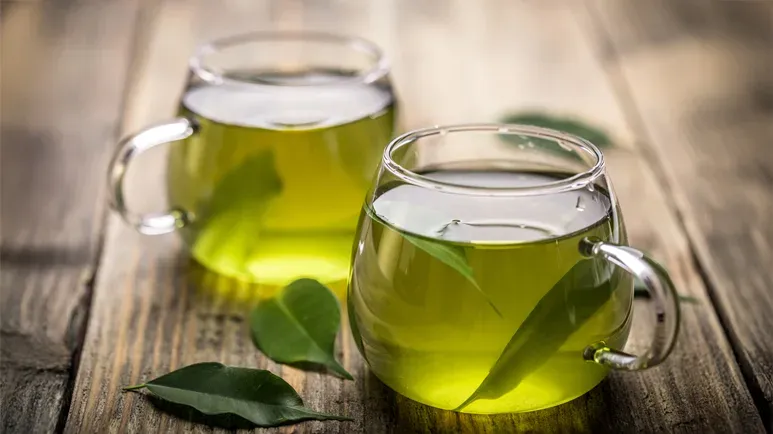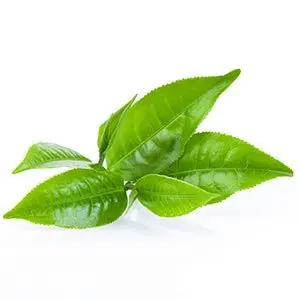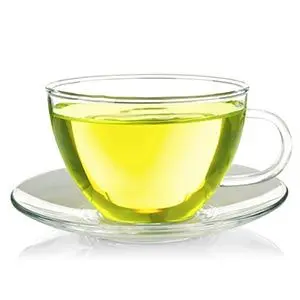Green Tea: This Simple Drink Could Transform Your Pet's Health
Renowned for its therapeutic effects for humans, you'll be pleased to know that furry friends can enjoy the same benefits of this polyphenol-rich beverage as well. Learn how to offer it to pets here.

STORY AT-A-GLANCE
- While black and oolong tea are made through varying degrees of oxidation, green tea leaves are not oxidized. Instead, the leaves are steamed, pan-fried and dried
- Green tea is rich in epigallocatechin gallate, a collection of polyphenols that may help manage inflammation and lower the risk of cancer
- Additional green tea benefits include promoting oral health and cleaning dirty ears
- Aside from serving it as a beverage, you can add cooled, decaf green tea directly to your pet’s homemade meals as a topper or “gravy”
- When offering green tea to your pet, make sure it’s decaffeinated and at room temperature; buy green tea from a certified-organic provider whenever possible
Editor's Note: This article is a reprint. It was originally published July 20, 2023.
If you’re a health-conscious individual, then you already know about green tea’s reputation. Many studies have been conducted on its benefits and the consensus is unanimous — green tea is good for your health.1,2,3 At some point, you may have wondered, “Can I give green tea to my pet?”
The answer is yes, you may offer decaffeinated green tea to your pet. In fact, it’s a superfood that can supercharge your pet’s nutritional intake, as it’s rich in antioxidative polyphenols, vitamins and minerals that may support your pet’s health in different ways. However, make sure your green tea is cooled, decaffeinated and given in appropriate amounts. In the article below, tips on how you can safely incorporate green tea into your pet’s diet are provide.
Green Tea Fun Fact

Green, black and oolong tea all come from the same Camellia sinensis plant. While black and oolong tea are made through varying degrees of oxidation, green tea leaves are not oxidized.4 Instead, the leaves are steamed, pan-fried and dried.5
What Makes Green Tea Good? Epigallocatechin Gallates
Epigallocatechin gallate (EGCG) catechins are a collection of polyphenols found in green tea leaves. Much of green tea’s research revolves around these bioactive compounds.6 In humans and lab animals, EGCG has been found to promote health in various ways.
“EGCG is a potent NRF2 activator, which regulates several antioxidant and detoxification pathways linked to longevity and lower oxidative stress.”7
Moreover, a 2010 study noted that the catechins may help with diseases related to metabolic syndrome, such as Type 2 diabetes and obesity.8 Another study noted that EGCG has chemoprotective properties and may even boost the effectiveness of other anticancer compounds, such as those found in ginseng.9
While there have been no clinical trials of green tea’s beneficial effects against cancer in pets, it’s reasonable to assume it may provide similar protective benefits for them. In fact, decaffeinated green tea extract can be part of a detoxification protocol to protect the liver and kidney from cancer-causing contaminants. If your furry family member has been diagnosed with cancer, consult with your veterinarian before adding green tea (or any supplement) to your pet’s treatment protocol.
Furthermore, there have been a couple of EGCG studies conducted directly on dogs, one of which showed it has a positive effect on metabolic health. In a study published in the British Journal of Nutrition, researchers noted that oral administration of green tea extract — with dosages that mimic normal intake — helped improve insulin sensitivity in obese dogs, compared to those that received a placebo.10 In another canine study, tea polyphenols were found to have an anti-inflammatory benefit by modulating COX-2 and iNOS expression, thereby attenuating liver inflammation.11
Other Nutrients Found in Green Tea
In addition to health-promoting polyphenols, green tea possesses other vitamins and minerals that may support pet health. According to research published in 2010, green tea contains vitamins C and E. 12 Minerals, including calcium, magnesium, iron and zinc, are also among its significant components, according to an article published in the journal Molecules.13
Vitamin C has antioxidant properties of its own, which may help reduce inflammation and cognitive aging.14 As for vitamin E, it may help lower the risk of age-related weight decline, as well as tremors. DNA damage that may result in liver abnormalities may be prevented by vitamin E as well.15 When it comes to minerals, magnesium is important in energy production,16 calcium for skeletal and cardiovascular health,17 and iron for transporting oxygen throughout the body.18
Other Uses of Green Tea
Aside from nutrition, green tea can be used topically to relieve certain health issues. Green tea infusion (using strong tea that has been cooled) is one of the best agents for cleaning dirty pet ears, and can be brewed in colloidal silver for an added antibacterial benefit. It can also be used to help soothe hot spots and mouth sores. Research has also shown that green tea (specifically matcha) may help reduce dental plaque formation in dogs.19
Did You Know?

Tea is one of the most popular beverages in the world, second only to water.20
Some Things to Know Before Offering Green Tea
Misinformation about many healthy fruits, vegetables, nuts and seeds abounds on the internet. This is because websites have labeled all risks (such as the risk of overconsumption causing gastrointestinal issues, or choking on too large of pieces or pits) as "toxicities," which isn't true but has managed to confuse millions of pet lovers, nonetheless.
In the case of green tea, its caffeine content may cause concern among pet parents, as caffeine can be toxic for pets.21 But the good news is you can let your pet reap the benefits of green tea without the side effects of caffeine by choosing and offering decaffeinated green tea. Additionally, green tea extracts may be too potent for pets to consume, so stick with cooled decaf tea instead of extracts, tinctures or capsules.
In fact, in the pet world, medicinal teas are increasingly being recognized as an inexpensive way to deliver beneficial properties from the plant directly to your pet. Even the pet food industry has started to latch onto this trend; you can now find green tea extract in some pet foods. However, steeping your own decaf green tea and offering it fresh to your pet is the best approach to infuse their diet with its longevity benefits. When serving decaffeinated green tea to your pet, make sure to let it cool first.
Try This Organic Decaf Green Tea Recipe
Afternoon teatime is an amazing way of bonding and making new memories with your furry best friend. Try this simple green tea recipe that should last your pet a few days when stored in the refrigerator.
Procedure:
- Combine 1 liter (about 4 cups) of purified water (or even better, bone broth) and 1 tea bag or 1 tablespoon of loose tea leaves.
- Steep for 15 minutes.
- Remove the tea bag or use a strainer to remove the tea leaves.
- Store the tea in a covered container (preferably a glass jar or pitcher) in the refrigerator for up to three days, or freeze in ice cube trays for easy thawing and serving later.
You can add warm decaf green tea directly to your pet’s dry food meals as a topper (which makes a “gravy” if you stir it) or use it to rehydrate dehydrated or freeze-dried pet food. Green tea can be a beneficial add-in to all highly processed pet foods, as it adds hydration and may help reduce the DNA damage caused by mycotoxins found in the food. Here are some serving size suggestions per day:
- Cats — 1 tablespoon
- Small dogs — 1/8 cup
- Medium dogs — 1/4 to 1/2 cup
- Large dogs — 1/2 to 1 cup
Top Green Tea Producers

China is the world’s biggest exporter of green tea, producing a total value of $762.66 million. Japan comes in second with a total export value of $98.56 million, and Germany is third with $61.25 million.22

Sustainability of the Green Tea Industry
Due to the growing interest in green tea, the ethical and environmental sustainability of its production are now being put in the spotlight. According to a report from the International Institute for Sustainable Development, the tea industry employs around 13 million people, and 9 million of those are smallholder farmers, which face processing problems because of their lack of access to tea-processing facilities.
These are controlled by a few multinational tea companies. It’s estimated that 85% of all tea comes from just a few of these companies, making wealth distribution a problem.23 Another potential problem is soil health where the plant grows. Because the plant stores compounds found in the soil it grows in, heavy metals and toxins may be absorbed by the plants and passed up the food chain.
According to a study published in 2021, the tea plant can “hyper-accumulate” fluoride.24 Another study highlighted the presence of mercury, lead, arsenic, aluminum and cadmium from collected tea leaf samples.25 Based on these findings, it’s best to select certified-organic green tea grown in a pristine environment. Many organic green tea providers also offer third-party testing for heavy metals and contaminants, which are the brands you should buy. You’ll find company purity testing protocols on their websites, if they have these quality control measures in place.
Sources and References
- 1,8 Chin Med. 2010 Apr 6;5:13, Abstract
- 2 Int J Mol Sci. 2020 Mar 4;21(5):1744, Abstract
- 3 Beverages 2017, 3(1), 6, Abstract
- 4 Eco Cha, September 7, 2021
- 5 NIH, Green Tea
- 6 Journal of Functional Foods Volume 5, Issue 4, October 2013, Pages 1529-1541, Abstract
- 7 Food and Chemical Toxicology. Volume 46, Issue 4, April 2008, Pages 1271-1278
- 9 Nutrients. 2012 Nov 8;4(11):1679–1691, Discussion
- 10 British Journal of Nutrition, Volume 99 (Issue 6), June 1, 2008, Discussion
- 11 BMC Veterinary Research, Volume 16, Article number: 234 (2020), Abstract
- 12 Chin Med. 2010 Apr 6;5:13, Green Tea Composition
- 13 Molecules. 2021 Mar 9;26(5):1487
- 14 American Kennel Club, March 14, 2024
- 15 J Prev Alzheimers Dis. 2017;4(4):226–235, Abstract
- 16 Journal of Veterinary Emergency and Critical Care, November 26, 2014, Abstract
- 17 Dogs Naturally Magazine, October 19, 2022
- 18 Wag, April 18, 2023
- 19 Scientifica, October 27, 2016, doi: 10.1155/2016/2183623, Abstract
- 20 IISD, Tea Coverage
- 21 VCA Animal Hospitals, Caffein Toxicity in Pets
- 22 Statista, Leading green tea exporting countries worldwide in 2023
- 23 IISD, Global Market Report: Tea
- 24 Environmental Pollution, Volume 270, 1 February 2021, 116283, Abstract
- 25 J Toxicol. 2013 Oct 23;2013:370460, Introduction











